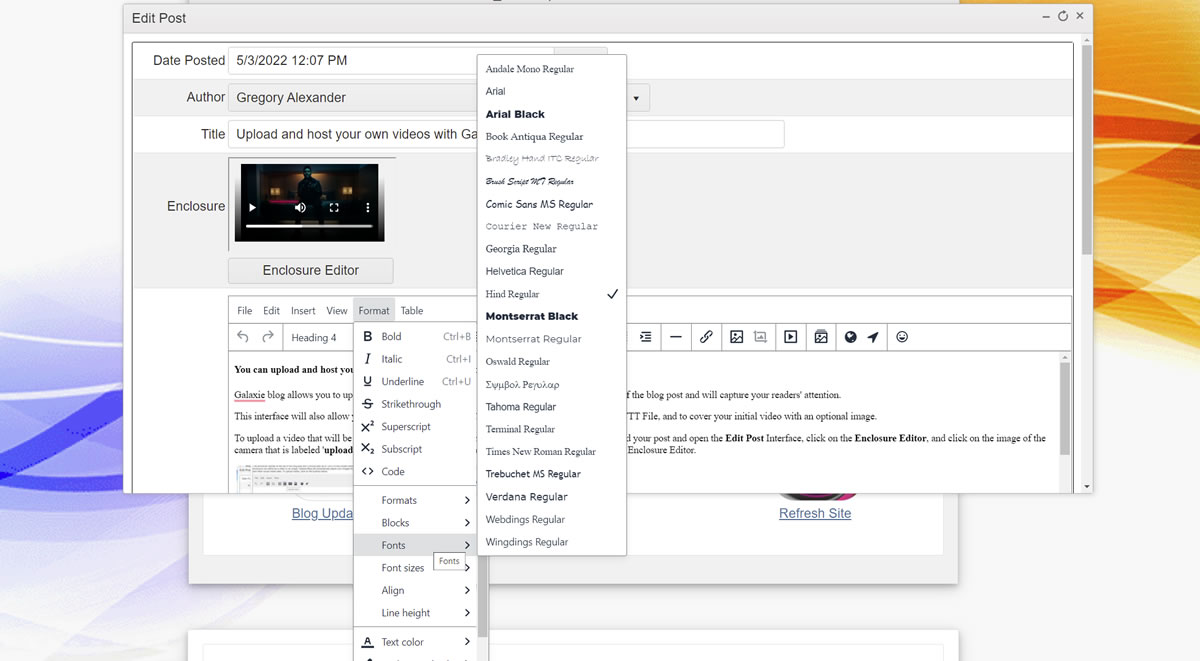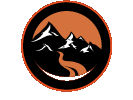Introducing Galaxie Blogs Edit Post Interface
|
May 11 |

Galaxie Blogs' Post Interface is one of the most powerful out-of-the-box blog editors available. It offers a countless number of tools and productivity features to allow you to craft a beautiful blog post quickly.
Galaxie Blog has integrated a customized version of TinyMCE in the Edit Post Interface. TinyMCE is free and open-source software and uses the MIT license. There are no upcharges, restrictions, or limits to its usage and no requirement to share source code.
TinyMCE has numerous productivity features, such as cleaning up pasted content from Word, Google Docs, and Excel. It complies with standards, and this customized Galaxie Blog version incorporates rich media support.
Nearly all of the TinyMCE core plugins are incorporated. Galaxie Blog also includes functionality typically found in paid 'freemium' plugins. For example, many paid 'TinyDrive' premium plugin features to handle media upload capabilities have already been built into Galaxie Blog. We have also incorporated functionality that is not available, such as embedding Bing Maps, uploading local videos with closed captions and video covers, image gallery support, and more.
There are scores of different Galaxie Blog editors. Each editor has a certain purpose, such as editing a post or uploading an icon for your site. All of the editors are WYSIWYG and offer a real-time preview. Below, we will cover two of the primary Edit Post interfaces.
Table of Contents
Major Edit Post Interfaces
There are two different major interfaces for a given post:
- Enclosure Media Editor
- Post Editor, also known as the Tiny Post Editor.
Note: Don't confuse the Edit Post Interface with the Tiny Post Editor. The Edit Post interface contains scores of interfaces for editing the post, whereas the Tiny Post Editor is one of many interfaces within the Edit Post Interface.
Enclosure Media Editor Feature Summary
An enclosure is an oversized image or media placed at the top of a post. It is often called a hero image as it captures the user's attention when viewing a post. The enclosure may contain rich media, such as a Bing Map, video, or carousel.
The enclosure editor differs from the post editor and handles different media types. This editor may be used to attach the following media:
- Drag and drop interface to upload videos from a local source or embed videos from an external source, such as YouTube or Vimeo
- Videos may also have:
- A video cover poster (an image that covers the video when it is not being played)
- WebVtt Captions can be applied to uploaded videos using the WebVTT Galaxie Editor.
- Videos may also have:
- Drag and drop web-friendly images, such as .jpg, png, .gif, .webp, etc.
- You can upload or include images from an external source.
- If you upload an image, Galaxie Blog will attempt to create the following images:
- Optimized image for Facebook sharing
- Optimized image for Twitter
- Three different images optimized for the Google Search Engine (used to display images in Google search results)
- Creates thumbnail images for the blog landing page and enclosure image interface preview
- Upload images may be edited within the browser. The following actions may be taken: change image orientation, brightness, contrast, gamma, flip the image horizontally or vertically, etc.,
- If you upload an image, Galaxie Blog will attempt to create the following images:
- You can upload or include images from an external source.
- Create static Bing maps with various options.
- Create Bing map routes showing the path of an intended travel route. A route can have two or more destinations (with a maximum limit of 12).
- Create hardware-accelerated carousels.
Summary of Tiny Post Editor features
The Tiny Post Editor handles the editing and authoring of blog post content. The post editor contains the following major features:
- Undo/Redo
- Various paragraph formatting.
- Bold, Italic
- Alignment tools (center, left justify, center, etc.)
- Bulleting tools and indentation
- Link and anchor tools
- Special characters
- Source code
- HTML tables
- Code samples for the dozens of programming languages
- Image editing of current embedded images
- Insert Media (videos and images)
- Upload and create image galleries using a drag-and-drop interface.
- The Gallery upload interface allows you to use images saved locally or the camera on your device if available.
- Create Static Maps
- Generate Map Routes containing two or more destinations
Other Edit Post interfaces and concepts
Along with the enclosure and inline post-WYSIWYG editors that were just covered, there are a few other Edit Post interface concepts that we should cover:
- Date Posted is an interface with a date-time picker that allows the author to set the post's date. When a post is released, the author will be prompted to change the post date to the current date. The author can either refuse or accept changing the date released to the current date.
- The post date may include past or future dates.
- If a post date is in the future, you will have the option to schedule the release of a post automatically.
- Sort Date allows the posts on the landing page to be reordered. This is useful if you want to organize the posts sequentially rather than by the posted date.
- Author allows administrators to change the author if there are multiple blog authors.
- Title changes the posts title.
- The CSS button opens the CSS editor, where you can apply custom CSS to a post.
- Like CSS, the JavaScript button opens an interface for including custom scripts in a post. I typically use this to include custom scripts to render Kendo widgets for the post, such as a Kendo grid.
- The JSON-LD button opens the JSON-LD editor, which can be used to set the JSON-LD manually. Galaxie blog automatically generates JSON-LD for SEO purposes.
- The Preview button is used to preview the page.
- The Post Header contains optional Galaxie Blog Post Directives. These directives, among other things, attach Javascript to a post, include a ColdFusion template with a cfinclude, embed responsive videos, and manually set the properties of the meta tags used for SEO. See Galaxie Post Directives for more information.
- Change Alias will allow you to change the friendly name in the URL.
- Set Theme allows you to assign a theme to a given post.
- Released moves the post into public view. Non-administrators cannot see a post until it is released.
- Allow Comments will enable blog post comments. Unchecking the checkbox will suppress commenting for the post.
- The Promote checkbox will highlight and promote a post to the top of the page.
- Remove will discard the post and move it into archived status. Once archived, a post can be resurrected or permanently deleted.
- Category will assign a post to a given category.
- Tag assigns a post a tag.
- Use the Related Posts dropdown to show the related posts underneath the blog post.
We will elaborate in greater detail in other posts.
Notes:
- All editors will automatically create a preview of the media within the editor, even for videos and maps!
- Be careful when uploading large videos or images. The max file size generally is around 8MB. If you have larger images or videos, you can upload them manually with an FTP client and link to them using the Enclosure Editor.
Related Entries
- Incorporating Bing Maps into Galaxie Blog
- Adding Dynamic Bing Maps to a Blog Post
- Creating Beautiful Galleries Within a Blog Post Using Galaxie Blog
- Upload and Host your Own Videos with Galaxie Blog
- Adding Images and Videos to a Bog Post
- Changing the JSON-LD that Galaxie Blog Automatically Generates for Your Posts
- Highlighting Code in a Blog Post
- Galaxie Blog Markdown Support
Tags
Post EditorThis entry was posted on May 11, 2022 at 12:10 AM and has received 720 views.
